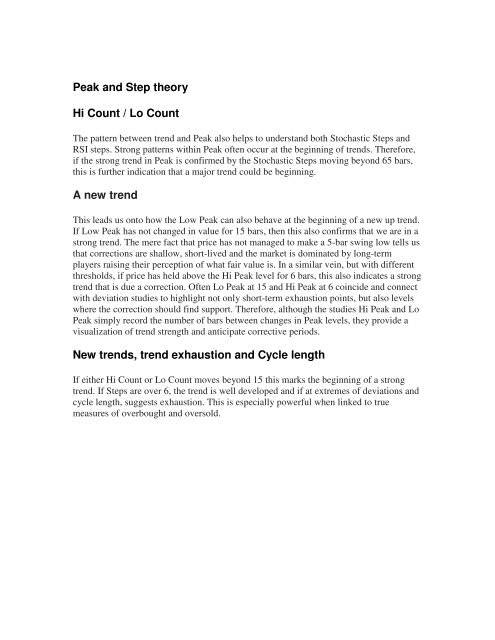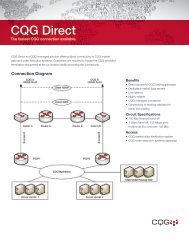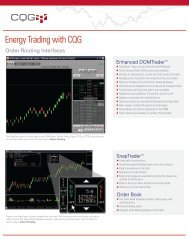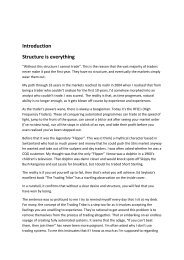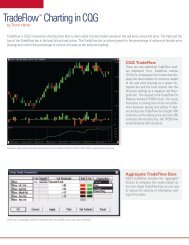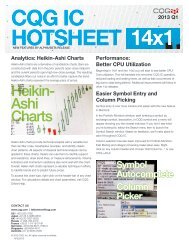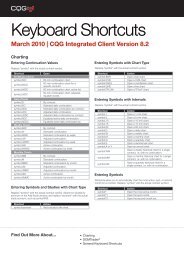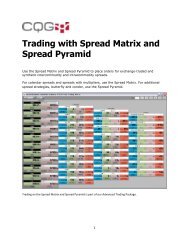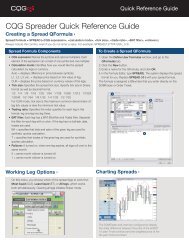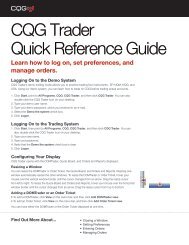Trading Time. - CQG.com
Trading Time. - CQG.com
Trading Time. - CQG.com
Create successful ePaper yourself
Turn your PDF publications into a flip-book with our unique Google optimized e-Paper software.
Peak and Step theory<br />
Hi Count / Lo Count<br />
The pattern between trend and Peak also helps to understand both Stochastic Steps and<br />
RSI steps. Strong patterns within Peak often occur at the beginning of trends. Therefore,<br />
if the strong trend in Peak is confirmed by the Stochastic Steps moving beyond 65 bars,<br />
this is further indication that a major trend could be beginning.<br />
A new trend<br />
This leads us onto how the Low Peak can also behave at the beginning of a new up trend.<br />
If Low Peak has not changed in value for 15 bars, then this also confirms that we are in a<br />
strong trend. The mere fact that price has not managed to make a 5-bar swing low tells us<br />
that corrections are shallow, short-lived and the market is dominated by long-term<br />
players raising their perception of what fair value is. In a similar vein, but with different<br />
thresholds, if price has held above the Hi Peak level for 6 bars, this also indicates a strong<br />
trend that is due a correction. Often Lo Peak at 15 and Hi Peak at 6 coincide and connect<br />
with deviation studies to highlight not only short-term exhaustion points, but also levels<br />
where the correction should find support. Therefore, although the studies Hi Peak and Lo<br />
Peak simply record the number of bars between changes in Peak levels, they provide a<br />
visualization of trend strength and anticipate corrective periods.<br />
New trends, trend exhaustion and Cycle length<br />
If either Hi Count or Lo Count moves beyond 15 this marks the beginning of a strong<br />
trend. If Steps are over 6, the trend is well developed and if at extremes of deviations and<br />
cycle length, suggests exhaustion. This is especially powerful when linked to true<br />
measures of overbought and oversold.


